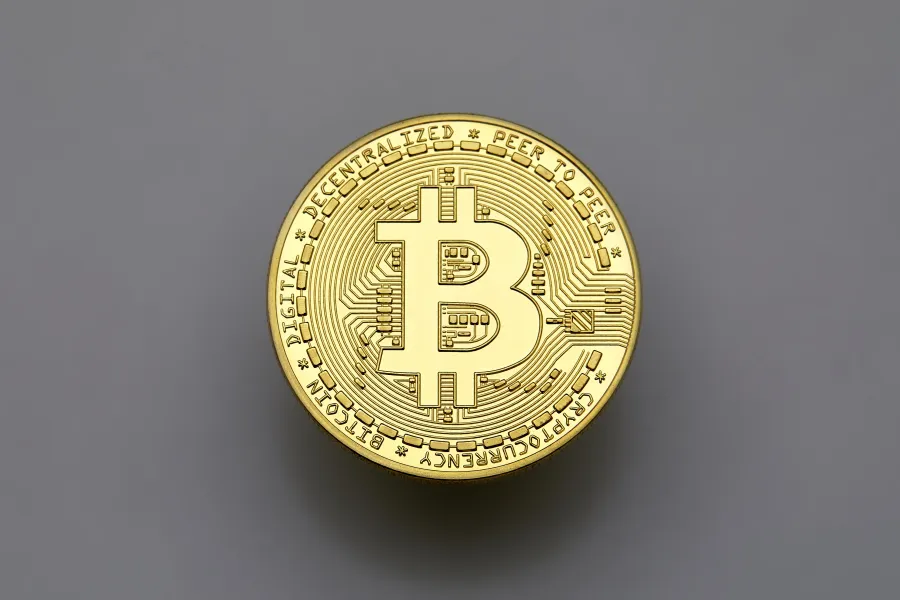The Internet is gone. Everything is Metaverse now
This week, our blockchain experts assessed the following topics:
- The Internet is gone. Everything is Metaverse now
- Infrastructure bill passed by House of Representatives despite controversial crypto section
- Grayscale Bitcoin Trust (GBTC) potentially to be converted to ETF
- Swiss National Bank is technically ready to launch a CBDC in January
- Market Update: The bull market is back: crypto market at $3 trillion
Our bi-weekly Crypto Industry Report provides you with valuable information on the global crypto industry – picked and analysed by our blockchain experts.
The Internet is gone. Everything is Metaverse now
The social network company Facebook has officially changed its name to Meta and announced that is wants to become a metaverse company. In this video, Mark Zuckerberg explains his vision of the future and the new direction Meta is pursuing. After the announcement, Metaverse became the buzzword of the week, and all over the internet people were discussing what the metaverse is (see here, here and here) and how future designs of it could look like.
What the metaverse actually is and will be is yet to be explored and invented. Definitions are hard to find, and the word is tough to explain for a simple reason: The metaverse doesn’t necessarily exist, yet. In general terms, the metaverse is a futuristic digital world where people can move in a virtual and augmented reality. It’s a vision for the future of the internet combined with some current trends in online infrastructure, including the creation of 3D worlds.
Mark Zuckerberg’s vision with the Metaverse is to build it as the next social media platform. Ironically, Meta was discussing opening physical stores to introduce people to electronical devices needed to enter and interact the Metaverse. Such devices, e.g. virtual reality headsets and eventually augmented reality glasses will be the gateways to this new world. Not surprisingly, Meta is already in the business of designing and producing such devices.
Crypto assets perusing some sort of metaverse visions, in particular gaming coins and tokens, have profited from the buzz and seen a very strong week. The Sandbox(SAND) token, an Ethereum based metaverse where creators can design, share and sell in-world assets, has tripled in price over the last two weeks. Decentraland (MANA), another blockchain based virtual world which lets users create, explore and trade in-world assets, has at times even quadrupled in value since the end of October. Other gaming tokens like Illuvium (ILV) and Enjin (ENJ) have also shown a strong performance over the last weeks.
And even Microsoft, a dinosaur among these new crypto projects, has announced its first move into the metaverse. The company will combine the mixed-reality capabilities of Microsoft Mesh, which allows people in different physical locations to join holographic experiences, with Microsoft Teams, a software tool to hold virtual meetings.
Infrastructure bill passed by House of Representatives despite controversial crypto section
The United States House of Representatives passed the $1.2 trillion bipartisan infrastructure bill. The infrastructure bill, which was first approved by the Senate in August, is primarily aimed at improving national transport networks and internet coverage. But it has been causing turmoil within the crypto community for months, as it also imposes a cryptocurrency tax reporting mandate requiring all digital asset transactions worth more than $10,000 to be reported to the IRS. The requirement not only applies to certain qualified entities, but to all citizens, which is why the bill is seen as unworkable and a threat to future technological innovation by many in the crypto space.
The crypto community criticises several potentially severe flaws in the bill. As the tax reporting mandate applies to all involved entities, the bill’s wording potentially includes software developers, transaction validators and node operators. But the reporting of crypto transaction processed by validators and node operators to the IRS is close to impossible, as the relevant information in many cases are not available to the providers of such services.
Further, the infrastructure bill phrases requirements for brokers of digital assets. The expression ‘broker’ is not clearly defined in the new bill though. The vague description of broker could even impose unrealistic tax reporting requirements for miners.
As software developers, validators, node operators and miners are not financial brokers in the traditional meaning of the word and offer strongly differing services, the tax reporting mandate imposed by the infrastructure bill on these groups seems highly unsuitable and, in most cases, unworkable.
Noncompliance with the bill’s requirements, including the inability to disclose crypto-related transactions and earnings, will be treated as tax violation and a felony. Legal experts unsuccessfully suggested amendments to the bill that would instead treat failure to report digital asset transactions as only a criminal offense.
The bill is now waiting to be signed into law by President Joe Biden. The overall consequences for the crypto space in the US are not yet predictable. Coinbase, one of the largest crypto brokers in the US, commented the bill in a blog post and suggest that the IRS should provide clarification and further regulation.
Grayscale Bitcoin Trust (GBTC) potentially to be converted to ETF
Grayscale has officially filed for their Bitcoin Trust to be converted to an ETF. The company submitted the required paperwork to the Security and Exchange Commission (SEC), meaning that the countdown for the future hearing has begun. The commission will now have 45 days to approve or disapprove the change. The move was triggered by the SEC’s clearance of two Bitcoin Futures ETFs which launched in October 2021.
Grayscale Bitcoin Trust (GBTC) launched already in 2013, but only became a SEC reported company in early 2020. At the time, it was the first crypto SEC reporting investment vehicle and thus vastly successful, as it provided regulated access to Bitcoin for traditional investors. Today, the Trust is still the largest Bitcoin investment vehicle with holdings of approximately 3.5% of the total Bitcoins in circulation.
Michael Sonnenshein, CEO of Grayscale Investments, said that the filling is ‘a watershed moment for our investors and industry partners’. According to Grayscale, the conversion from a Trust to an ETF is the ‘natural next step in the product’s evolution’. Should the filling be approved by the SEC, holders of publicly traded shares of GBTC would see their shares automatically converted into shares of the new ETF.
Swiss National Bank is technically ready to launch a CBDC in January
The Swiss National Bank is technically ready to launch a wholesale Central Bank Digital Currency (wCBDC), said governing board member Thomas Moser. The SNB has done extensive testing which has now been successfully completed. According to Moser, the Central Bank could launch as early as January 2022.
The wCBDC would go live on the Swiss Digital Exchange (SDX), which is part of the Swiss stock exchange (SIX). SDX has received regulatory approval from the swiss financial regulator FINMA to go live with a marketplace for digital assets earlier this year. The digital exchange will provide institutional investors with a robust and safe infrastructure to trade digital and tokenised assets.
The creation of SDX was made possible through the introduction of the so-called ‘swiss blockchain law’. The new law which enables upgrades of the financial market infrastructure entered into force in August 2021 and the SIX Group was among the first entities to seek licenses from the FINMA. SDX has recently announced that it is ready to start operations by the end of November.
Even though the SNB and SDX are technically ready to launch a wCBDC, a policy decision first has to be made by the Central Bank. This decision involves legal clarifications if the SNB is legally allowed to launch a wholesale CBDC. According to Thomas Moser, there are no plans for going live at this point in time.
Market Update: The bull market is back: crypto market at $3 trillion
Several Layer 1 blockchains like Bitcoin, Ethereum, Solana, Avalanche and Polkadot reached new all-time this week. For newer blockchains like Solana and Avalanche these all-times highs came as no surprise, as these coins have been strongly increasing in price week after week since the beginning of October.
The Bitcoin price on the other hand had moved sideways in the range between $60k-$63 over the last two weeks. This cooling-off period after the assets’ previous all-time high mid-October was suddenly interrupted when Bitcoin broke through the $63k resistance and soared to a new all-time high of $68’530 in just two days on Tuesday. Not even 24 hours later, it even briefly traded above $69k on some exchanges, before crashing back down to $65k in matter of minutes on Wednesday evening.
But not only the layer 1 blockchains rallied to new all-time highs. The crypto market followed suit, reaching a total market valuation of over $3 trillion this week, which is the highest it has ever been. This demonstrates the resilience of the crypto industry, which even though it’s at a global inflection point and despite facing regulatory challenges shows prevalence and resilience.
The new all-time highs also disprove the bull trap theory. The contrary seems the be true: the bull market is back, stronger than ever. Bitcoin’s top three weeks ago and the dip shortly after were not a double top, but only a price correction that prepared the currency for this next leg up.
With the Altcoins soaring alongside Bitcoin and a crypto market valuation of $3 trillion, the Bitcoin dominance has further decreased over the last 3 weeks from 48% to 43%. This again emphasises the fact that the whole crypto market has entered the bull run.
But not all large crypto currencies have profited from the run-up this past week and especially the meme coins have been left behind so far. One of the big losers was Shiba Inu, which after its out-of-this world run-up over the last months has decreased 37% in the last fourteen days and fell behind Dogecoin in market capitalisation again. Dogecoin hasn’t profited from the bull market either and stayed flat within the $0.26-$0.29 range.
Share post

Related Posts

To be continued: SEC pushes back at Coinbase
SEC pushes back against Coinbase's claim of no regulatory jurisdiction, stating the crypto exchange knowingly violated securities laws. Meanwhile, Gemini, owned by the Winklevoss twins, files a lawsuit against Digital Currency Group and CEO Barry Silbert alleging fraud and deception following the collapse of a lending venture. The Bank for International Settlements survey reveals that 93% of central banks are working on Central Bank Digital Currencies (CBDCs) which are seen as potential geopolitical policy tools and a challenge to the dollar's dominance. The race for a Bitcoin ETF intensifies, with BlackRock refiling its application featuring Coinbase as the market surveillance partner, as the Grayscale Bitcoin Trust's discount to net asset value narrows, potentially indicating the transformation into a proper ETF.

BlackRock fever: The ETF filing spree and institutional appetite
BlackRock filed for a Bitcoin ETF with the SEC, inspiring similar applications from firms like WisdomTree, Invesco, and Fidelity, and boosting Bitcoin's value. Traditional finance institutions such as Fidelity and Nasdaq are showing increased interest in crypto, with moves towards exchange and custody services. The defunct crypto exchange FTX, under new CEO John Ray III, is planning a potential revival after recovering significant assets. Meanwhile, the IMF is developing a global CBDC platform for cross-border transactions and DAI, a major stablecoin, is diversifying its backing from USDC to include real-world assets.

SWIFT explores blockchain interoperability
SWIFT has partnered with Chainlink to experiment with leveraging its infrastructure for transferring tokenized value across blockchain networks. The trials will address interoperability, regulatory challenges, and operational drawbacks for financial institutions in a blockchain environment. Chainlink will provide connectivity between private and public blockchains. SWIFT's findings will be published later this year.

China wants an Internet 3.0, while Hong Kong gears up for crypto trading launch
China is striving for advancement in Internet 3.0 technologies, with Beijing's white paper outlining plans to invest in the development of the metaverse and Web3 tech such as non-fungible tokens, but not cryptocurrencies due to the country's previous ban. Meanwhile, Hong Kong is launching its new crypto trading regulations, allowing retail investors to participate from June 1, 2023, with exchanges like Huobi Hong Kong beginning to offer spot trading to retail and institutional clients. Furthermore, the Cybersecurity and Technology Crime Bureau of the Hong Kong Police Force is launching a metaverse platform, 'CyberDefender', to educate the public about potential threats and crime prevention in the metaverse.

BRC-20: Innovating on Bitcoin is the new cool
A new Bitcoin “token standard” called BRC-20 is the hottest thing right now in the crypto space. It was introduced in March 2023 by a pseudonymous person called Domo. Bitcoin Request for Comment 20 (BRC-20) is an experiment that brings fungible tokens to the Bitcoin blockchain using the Ordinals protocol. Ordinals rely on ordinal theory, enabling the identification and tracking of individual satoshis within Bitcoin's existing supply, while also allowing them to be inscribed (associated) with data. Through this technique, satoshis (sats) are given ordinal numbers starting with zero. Anyone can add a script file to a sat to create and transfer a BRC-20 token on the Bitcoin blockchain. BRC-20 tokens are created using three functions: deploy, mint, and transfer.

US versus EU: Giants fighting for regulatory clarity
It is official now: The European Parliament voted overwhelmingly in favour of Markets in Crypto Assets (MiCA), legislation that will guide the crypto sector in all 27 European Union member states. 517 parliament members voted for it, while 38 voted against it. This approval makes Europe the first continent with comprehensive rules for cryptocurrencies. Also, it means that all EU member states will have unified crypto regulations. So, if a crypto business is approved in one EU member country, it could easily expand operations to another member state. The EU’s milestone was lauded by Binance as well as Kraken and Coinbase.

Ethereum: Another milestone reached with the Shanghai Update
On April 12, 2023, Ethereum successfully executed the planned Shanghai update also known as Shapella. The upgrade allows validators to unstake their staked ETH and withdraw their rewards, as well as staked ether if chosen. Now that another level of uncertainty has waned for the biggest smart contract blockchain, this new feature could attract more investors to stake their ether.

CFTC versus Binance:
Clash of the titans
The world’s leading crypto exchange by volume, Binance, alongside its CEO, Changpeng Zhao, and ex-Chief Compliance Officer, Samuel Lim, are being sued by the US Commodity Futures Trading Commission (CFTC).

Stablecoin USDC briefly lost its
peg. What do we learn from this?
One of the top stablecoins by market cap, USD Coin (USDC), de-pegged briefly from the US dollar on March 11 following the collapse of Silicon Valley Bank (SVB). Circle, the stablecoin’s issuer, held $3.3 billion in USDC reserves with the bank, which caused panic as investors rushed to withdraw their funds, assuming USDC could implode because of insufficient backing. However, the amount represented less than 8% of the stablecoin’s reserves.

Ethereum Shanghai upgrade pushed to April: Will there be too much selling pressure?
Ethereum stakers have been eagerly awaiting the Shanghai upgrade, which will enable them to withdraw their staked ether. Stakers’ funds have been locked since Ethereum introduced the proof-of-stake Beacon Chain in December 2020. The upgrade was originally slated to take place sometime in March but was pushed by about two weeks to April during a recent execution layer meeting.